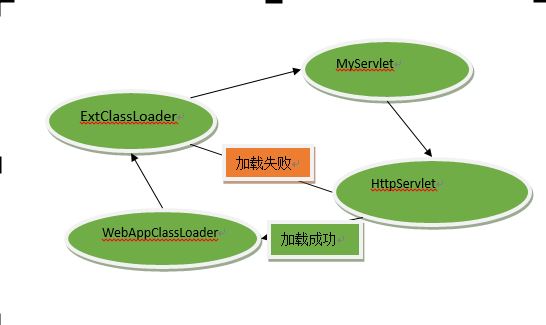ffmpeg的内部Video Buffer管理和传送机制
本文主要介绍ffmpeg解码器内部管理Video Buffer的原理和过程,ffmpeg的Videobuffer为内部管理,其流程大致为:注册处理函数->帧级释放->帧级申请->清空。
1 注册get_buffer()和release_buffer()
FFAPI_InitCodec()
avcodec_alloc_context()
avcodec_alloc_context2()
avcodec_get_context_default2(AVCodecContext *s,…){
……
s->get_buffer = avcodec_default_get_buffer;
s->release_buffer = avcodec_default_release_buffer;
……
}
2帧级的内存申请和释放调用

图1帧级内存申请和释放的函数调用
2.1 FFAPI函数调用libavcodec相应的codec(WMV3对应的Codec是VC1)函数进行解码,过程中调用内部buffer处理函数。其中buffer管理被统一封装到Mpegvideo接口中(包括的codec有H.261, H.263, H.264, mpeg12, rv10,rv34, svq1和VC1)
FFAPI_Decode()
avcodec_decode_video2()
avctx->codec->decode()//初始化过程中注册codec,wmv3的解码函数是
vc1_decode_frame(){
decode_vc1_header;
MPV_frame_start(); //2.2.2
vc1_decode_blocks();
MPV_frame_end(); //2.2.3
}
2.2 MPV_frame_start()//通过调用get_buffer()申请当前帧的video buffer。
MPV_frame_start()
//首先调用release_buffer()释放非参考帧的video buffer
for(i=0; i<MAX_PICTURE_COUNT; i++)
if(s->picture[i].data[0] && !s->picture[i].reference)
free_frame_buffer(s, &s->picture[i]); //调用s->avctx->get_buffer(),回调avcodec_default_release_buffer()
ff_alloc_picture()
alloc_frame_buffer()
s->avctx->get_buffer() //回调avcodec_default_get_buffer()
2.3MPV_frame_end() //完成视频加边等操作
3帧级的内存申请和释放处理方法
3.1内部buffer数据结构
– typedef struct InternalBuffer{
– int last_pic_num;
– uint8_t *base[4];
– uint8_t *data[4];
– int linesize[4];
– int width, height;
– enum PixelFormat pix_fmt;
– }InternalBuffer;
– typedef struct AVCodecContext {
– ……
– int internal_buffer_count; //记录当前内部buffer的个数,get_buffer和release_buffer时均需要对其进行维护。
– void *internal_buffer;//初始化为数组InternalBuffer [INTERNAL_BUFFER_SIZE]
– ……
– } AVCodecContext;
Codec通过维护internal_buffer_count和internal_buffer实现高效的内存管理。
3.2参考帧管理相关数据结构
– typedef struct Picture{
– uint8_t *data[4];
– int linesize[4];
– uint8_t *base[4];
– int reference;
– ……
– } Picture;
– typedef struct MpegEncContext{
– ……
– Picture* picture; //初始化为数组Picture[INTERNAL_BUFFER_SIZE]
– Picture* last_picture_ptr; //指向前一帧
– Picture* next_picture_ptr;; //双向预测时,指向后一帧
– Picture* current_picture_ptr;//指向当前帧
– ……
– } MpegEncContext;
3.3申请和释放原理

图2 内存申请和释放原理
(1)初始化时将internal_buffer全部清零
(2)释放buffer时,将释放的buffer与最后一个有效buffer交换,而不是用av_free()释放内存。
avcodec_default_release_buffer(AVCodecContext *s, AVFrame *pic){
s->internal_buffer_count–;
last = &((InternalBuffer*)s->internal_buffer)[s->internal_buffer_count];
//将last buffer和要释放的buffer交换,使last buffer变成无效buffer,在下次get_buffer时能被申请到。
FFSWAP(InternalBuffer, *buf, *last);
for(i=0; i<4; i++){
pic->data[i]=NULL;
}
}
(3)申请buffer时,检查internal_buffer[internal_buffer_count]的基址是否非空,若非空则直接使用internal_buffer[internal_buffer_count];若空,使用av_malloc()函数进行申请。
这样处理的好处是避免了频繁的调用malloc()和free(),从而提升了效率。
avcodec_default_get_buffer(AVCodecContext *s, AVFrame *pic){
……
buf= &((InternalBuffer*)s->internal_buffer)[s->internal_buffer_count];
get_size_info(size[]);
buf->base[0, 1, 2] = av_malloc(size[0, 1, 2]);
buf->data[0, 1, 2] = buf->base[0, 1, 2] + padding_offset[0, 1, 2];
……
}
(4)决定输出帧是在每帧解码后,根据当前帧的类型和参考信息决定输出帧。
if (s->pict_type == FF_B_TYPE || s->low_delay) {
*pict= *(AVFrame*)s->current_picture_ptr;
} else if (s->last_picture_ptr != NULL) {
*pict= *(AVFrame*)s->last_picture_ptr;
}
3.4举例——假设解码IPBPB的非H.264码流。
(1)初始化后的状态如所示,IBC为ctx->internal_buffer_count,CurPtr为s->current_picture_ptr,LastPtr为s->last_picture_ptr,NextPtr为s->next_picture_ptr。
gpAVPicture指针为输出图像的指针。

图3 初始化状态
(2)解码第一个I帧,过程中不会不调用release_buffer(),get_buffer()得到picture[0] ,此时不输出任何图像。

图4解码第一个I帧后的状态
(3)解码第一个P帧,过程中不调用release_buffer(),get_buffer()得到picture[1] ,输出picture[0]。

图5解码第一个P帧后的状态
(4)解码第一个B帧,过程中不调用release_buffer(),get_buffer()得到picture[2] ,输出picture[2]。

图6解码第一个B帧后的状态
(5)解码第二个P帧,调用release_buffer(&picture[2]),再调用get_buffer(),得到picture[2], 输出picture[1]。

图7解码第二个P帧的状态
ref: http://blog.csdn.net/xietao_live_cn/article/details/6327451



